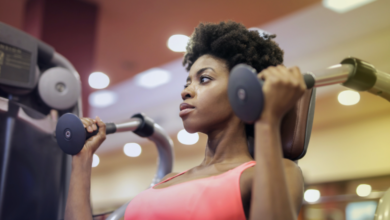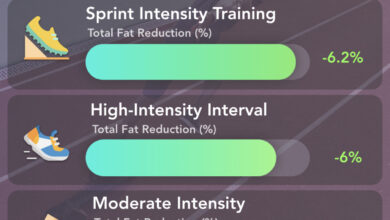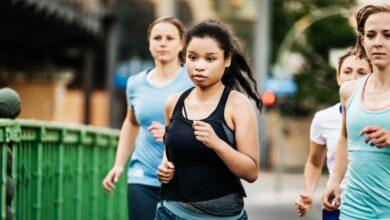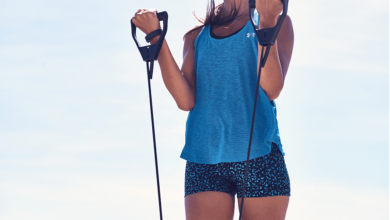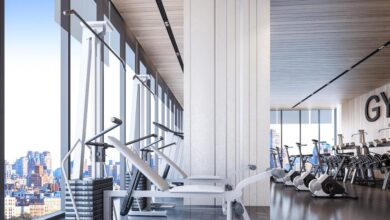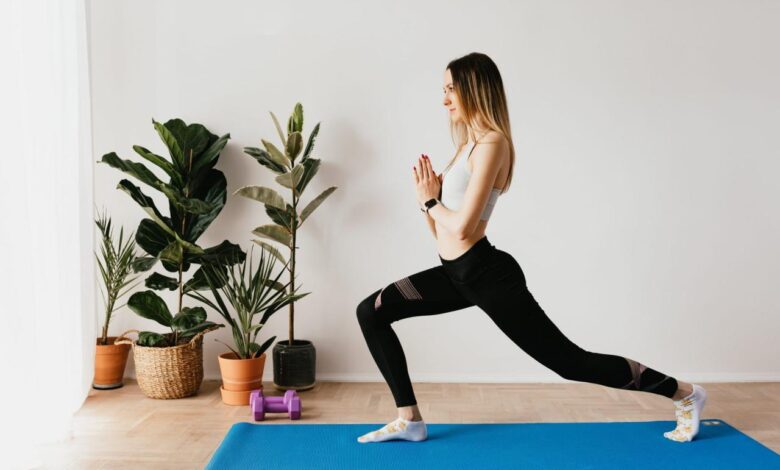
6 Ways to Modify Squats and Lunges for Bad Knees
6 Ways to Modify Squats and Lunges for Bad Knees: If you have knee pain, squats and lunges can feel like impossible feats. These exercises are fantastic for building lower body strength and power, but they can also put stress on your knees, especially if you have pre-existing conditions.
Don’t worry, though! There are ways to modify these exercises to make them more knee-friendly, allowing you to reap the benefits without risking further injury.
This article will explore six effective modifications that can help you safely incorporate squats and lunges into your workout routine. From reducing the range of motion to using support and changing your stance, these tips can make a big difference in how your knees feel during these exercises.
We’ll also discuss alternative exercises that target similar muscle groups if you find that squats and lunges are still too challenging for your knees.
Understanding Knee Pain and Squats/Lunges
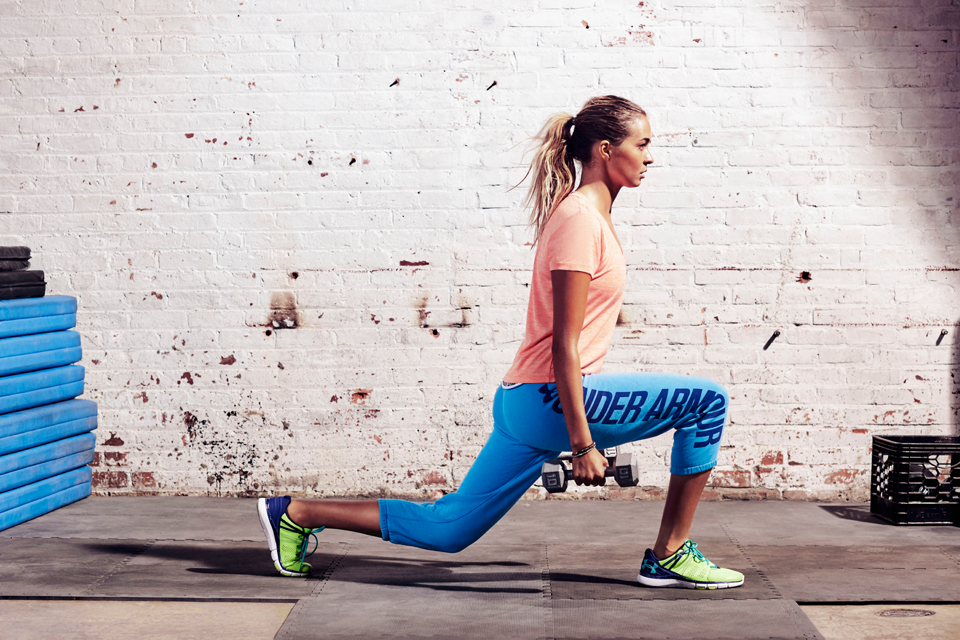
Squats and lunges are excellent exercises for building lower body strength and improving overall fitness. However, if you have knee pain, these exercises can be challenging and potentially aggravating. Understanding the common reasons why knee pain might interfere with squats and lunges is crucial for modifying these exercises effectively and safely.
So you’re looking for ways to modify squats and lunges for bad knees? It’s all about finding the right balance between support and challenge. Remember, choosing the right footwear is crucial too, especially when it comes to impact. If you’re unsure about the difference between walking and running shoes, check out this helpful guide.
It’ll give you a better understanding of how different shoe types can affect your knees and overall workout experience. Once you’ve got your shoe game sorted, you can confidently explore those modifications and get back to those squats and lunges!
Common Reasons for Knee Pain During Squats and Lunges
Knee pain during squats and lunges can stem from various factors, including:
- Muscle Imbalances:Weak or tight muscles surrounding the knee joint can lead to improper movement patterns and increased stress on the joint. This can cause pain during squats and lunges.
- Joint Degeneration:Conditions like osteoarthritis, where the cartilage in the knee joint wears down, can cause pain and stiffness, making squats and lunges uncomfortable.
- Previous Injuries:Past injuries to the knee, such as ligament tears or meniscus injuries, can make the joint more susceptible to pain and instability during these exercises.
- Overuse:Performing squats and lunges with improper form or excessive repetitions can strain the knee joint, leading to pain and inflammation.
- Improper Form:Incorrect technique, such as excessive knee valgus (knees collapsing inward), can put undue stress on the knee joint, causing pain.
How Squats and Lunges Can Aggravate Knee Issues, 6 ways to modify squats and lunges for bad knees
These exercises can exacerbate knee pain due to the following reasons:
- Increased Joint Load:Squats and lunges involve significant weight-bearing, placing a considerable load on the knee joint. If there is existing knee pain or instability, this load can worsen the symptoms.
- Range of Motion:These exercises require a specific range of motion, which may be limited by knee pain or injury. Attempting to push beyond the comfortable range can lead to further pain and injury.
- Muscle Strain:Improper form or weak muscles can lead to muscle strain around the knee joint, contributing to pain and discomfort.
- Joint Instability:Squats and lunges can exacerbate joint instability, particularly in individuals with ligament injuries or weakened ligaments.
Knee Conditions Requiring Modifications
Certain knee conditions may necessitate modifications to squats and lunges:
- Osteoarthritis:This condition involves cartilage breakdown, causing pain and stiffness. Modifications are crucial to reduce joint stress and protect the cartilage.
- Meniscus Tears:Tears in the meniscus, a C-shaped piece of cartilage in the knee, can cause pain and instability. Modifications help avoid further damage and promote healing.
- Ligament Injuries:Injuries to the ligaments, such as ACL or PCL tears, can compromise joint stability. Modifications are essential to avoid further injury and promote proper healing.
- Patellofemoral Pain Syndrome:This condition, characterized by pain around the kneecap, can be aggravated by squats and lunges. Modifications help reduce stress on the kneecap and alleviate pain.
Modification 2
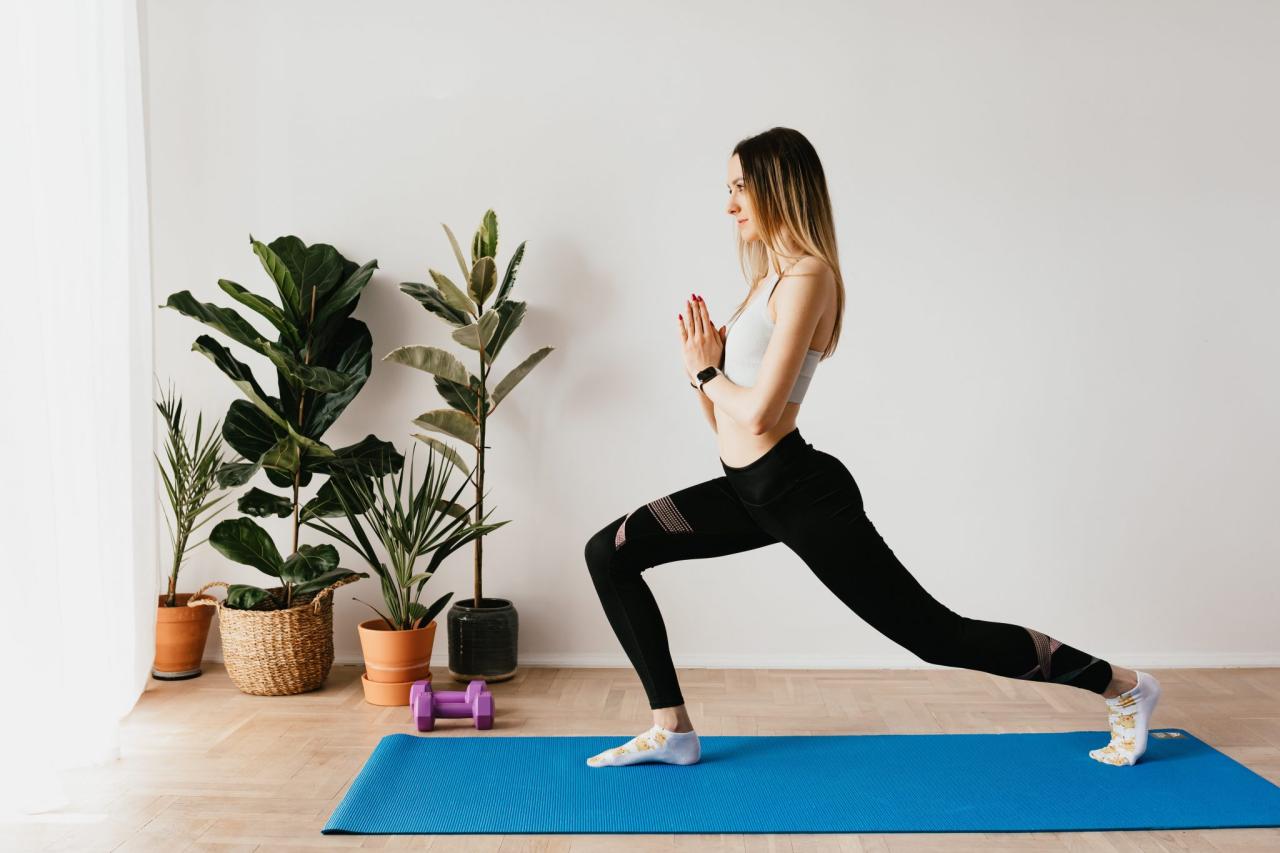
Using a wall or chair for support can significantly reduce stress on your knees during squats and lunges, making them more accessible. By leaning against a stable surface, you can distribute your weight more evenly and reduce the strain on your joints.
Using a Wall for Support
Using a wall for support during squats and lunges can be an effective way to modify these exercises. This method provides stability and reduces the need for deep knee flexion.
- Stand facing a wall, with your feet shoulder-width apart and your back straight. Place your hands on the wall at shoulder height.
- Slowly lower your body down into a squat position, keeping your back straight and your core engaged. As you lower, maintain a slight bend in your knees to avoid excessive pressure on your joints.
- Push off with your heels to return to the starting position.
Using a Chair for Support
Using a chair for support during squats and lunges offers a similar benefit to using a wall, allowing you to perform the exercises with less knee stress.
- Stand facing a chair with your feet hip-width apart. Place your hands on the chair’s seat for support.
- Lower your body down into a squat position, keeping your back straight and your core engaged. As you lower, maintain a slight bend in your knees to avoid excessive pressure on your joints.
- Push off with your heels to return to the starting position.
Choosing the Right Support
When selecting a support, consider factors such as stability, height, and accessibility.
Working out with bad knees can be a challenge, but there are plenty of modifications you can make to keep your fitness routine going. Squats and lunges are great exercises, but if your knees are giving you trouble, you can try variations like wall sits, chair squats, or lunges with a chair for support.
And speaking of support, it’s important to fuel your workouts with healthy foods, so check out these 8 easy sugar swaps for a healthier diet. Once you’ve got your nutrition in check, you can focus on finding the right modifications for your squats and lunges, ensuring a safe and effective workout.
- Stability:Choose a surface that provides a firm and stable base, such as a sturdy wall or a heavy chair. Avoid using unstable surfaces like a wobbly chair or a light-weight object.
- Height:Adjust the height of your support to ensure your body is properly aligned. The wall should be at shoulder height, while the chair should be at a height that allows you to maintain a slight bend in your knees throughout the exercise.
- Accessibility:Choose a support that is easily accessible and convenient to use. A wall is readily available in most spaces, while a chair can be easily moved.
Benefits of Using Support
- Reduced knee stress:By leaning against a stable surface, you can distribute your weight more evenly, reducing the pressure on your knees. This can be particularly beneficial if you have knee pain or weakness.
- Improved form:Using support can help you maintain proper form during squats and lunges. This can prevent unnecessary strain on your knees and other joints.
- Increased confidence:Having a support to lean on can boost your confidence, making you feel more secure during the exercises.
Modification 4
Resistance bands can be a valuable tool for enhancing knee stability during squats and lunges, especially for individuals with knee pain or instability. They provide external support and help engage the surrounding muscles, promoting proper form and reducing stress on the knee joint.
If you’re dealing with knee pain, you can still get a great workout! There are plenty of ways to modify squats and lunges to make them knee-friendly. For example, try using a chair for support or widening your stance. And remember, to avoid plateaus and keep making progress, it’s essential to challenge yourself with new exercises and variations.
Check out these 6 ways to avoid workout plateaus and consistently progress to keep your workouts exciting and effective. With a little creativity and adaptation, you can continue to strengthen your legs and improve your overall fitness, even with knee issues.
Using Resistance Bands for Squats and Lunges
Resistance bands can be incorporated into squats and lunges in several ways to provide additional support and challenge. Here are some common methods:
- Around the Thighs:Place the band just above your knees, ensuring it’s snug but not too tight. As you squat or lunge, the band will resist your leg movement, forcing your muscles to work harder to maintain stability. This helps activate the glutes and inner thighs, which are crucial for knee support.
- Around the Feet:Secure the band around both feet, just above your ankles. As you perform squats or lunges, the band will resist your leg movement outward, promoting proper alignment and preventing knee valgus (knees collapsing inward).
- Around the Knees:Place the band around both knees, just above the knee joint. This method is less common but can be used to target the quadriceps and hamstrings, enhancing knee stability during the exercise.
Benefits of Using Resistance Bands
Resistance bands offer several advantages when incorporated into squats and lunges:
- Increased Muscle Activation:The resistance provided by the band forces your muscles to work harder, leading to increased muscle activation and strength gains.
- Improved Stability:The external support from the band helps maintain proper form and alignment, reducing stress on the knee joint and enhancing stability.
- Enhanced Range of Motion:The resistance from the band can help improve your range of motion, allowing you to squat or lunge deeper without pain or discomfort.
- Versatility:Resistance bands are portable and affordable, making them convenient to use at home or the gym.
Potential Drawbacks of Using Resistance Bands
While resistance bands offer numerous benefits, it’s essential to be aware of potential drawbacks:
- Incorrect Placement:If the band is placed too high or too low, it can create unnecessary strain on the knee joint.
- Excessive Resistance:Using a band that is too resistant can increase the risk of injury, especially if you are new to squats and lunges.
- Limited Weight Resistance:Resistance bands are not as effective as free weights for building muscle mass.
Modification 5: 6 Ways To Modify Squats And Lunges For Bad Knees
If you’re experiencing knee pain that prevents you from performing squats and lunges, it’s important to find alternative exercises that can target similar muscle groups without putting undue stress on your knees. This modification focuses on exploring alternative exercises that offer similar benefits without the strain.
Alternative Exercises
There are several exercises that can target the same muscle groups as squats and lunges without putting excessive stress on your knees. Here’s a table that Artikels some alternatives, along with their advantages and disadvantages:
| Exercise Name | Muscle Group Targeted | Difficulty Level |
|---|---|---|
| Wall Sit | Quadriceps, Glutes, Hamstrings | Beginner |
| Step-Ups | Quadriceps, Glutes, Hamstrings, Calves | Intermediate |
| Glute Bridges | Glutes, Hamstrings, Lower Back | Beginner |
| Hip Thrusts | Glutes, Hamstrings, Lower Back | Intermediate |
| Leg Press | Quadriceps, Glutes, Hamstrings | Beginner to Advanced |
Summary
By understanding the potential impact of squats and lunges on your knees and incorporating these modifications, you can enjoy the benefits of these exercises without putting unnecessary strain on your joints. Remember to listen to your body, start slowly, and gradually increase the intensity as you feel more comfortable.
With a little creativity and adaptation, you can achieve your fitness goals while protecting your knees. Happy training!

